Violet is the goddess of beauty among indoor plants
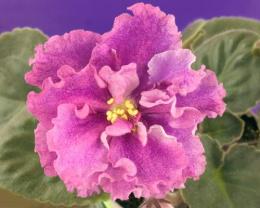
Over the centuries, breeders have developed a huge variety of violet varieties. And the goddess of beauty variety occupies a worthy place among them. Today we will learn the history of its creation, talk about the intricacies of care, as well as the main diseases that threaten the plant.
Content:
Breeding Saintpaulia EK-goddess of beauty
Saintpaulia or Usambara violet is native to Africa. It grows wild in the mountains of Tanzania and Kenya. Saintpaulia was first discovered in 1892 by French nobleman Walter von Saint-Paul, who collected the seeds of the Usambara violet and mailed it to his father. He, in turn, passed them on to the botanist, who began breeding the plant.
A year later new variety of violets was presented to the public. By the beginning of the 30s, the selection of Saintpaulias as indoor plants began in America. They gained so much popularity that after 10 years there were already about 100 varieties of indoor violets.
Saintpaulia is a low-growing evergreen plant. Female and male plants are distinguished by gender. Female plants have a small light spot on the leaves. Male type Saintpaulias have completely green leaves. Flowers have 5 petals. According to the size of the rosette, the sizes of Saintpaulia violets vary from 5 cm to 60 cm.
The Saintpaulia violet variety EK-goddess of beauty was bred in the early 2000s by Togliatti breeder Elena Korshunova.This variety of violets is distinguished by large, up to 9 cm, flowers with velvety wavy petals arranged in the shape of a five-pointed star, lilac-raspberry shades with a dark green rosette of leaves.
The violet variety “EK-Goddess of Beauty” is a purely indoor plant variety. From the very beginning of the variety's presentation at the exhibition in 2003, these violets have gained immense popularity among indoor plant growing enthusiasts. This happened thanks to the beautiful flowering and good vital indicators of the flowers.
Features of growth and care
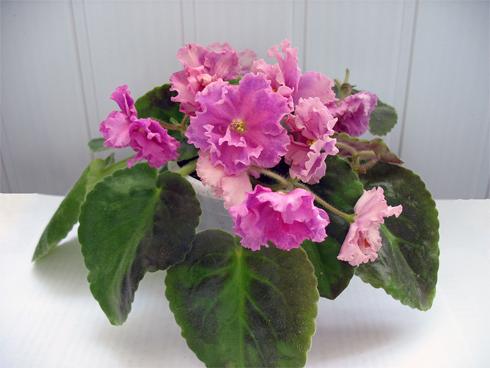
Will bring a lot of joy violet blossom and lovers of indoor plant growing. Indoor violet blooms almost all year round, more precisely, about 10 months. At home, violet prefers bright light without direct sunlight and does not tolerate drafts.
To maintain long flowering, experienced plant growers add light to plants by equipping a place for a fluorescent lamp above them. On average, indoor violets need a full 12-hour light period per day. If the violet stretches its leaves upward, then it clearly does not have enough light. For indoor violets, specialized soil is sold, already saturated with all the necessary fertilizers.
Saintpaulia also grows well in soils with the addition of turf, pine needles, humus and peat. Violets need to be replanted at least once a year. This is required to avoid contracting diseases and mold. The violet should be watered at the root with well-settled water at room temperature.
The violet should absolutely not be sprayed to avoid rotting of the leaves. Just like garden varieties of violets, indoor plant growing uses mineral fertilizers to feed plants.
Propagation of violets This is best done by growing a cutting. When planting in a pot, it is recommended to lay a small layer of expanded clay on the bottom to ensure water drainage.
Common violet diseases
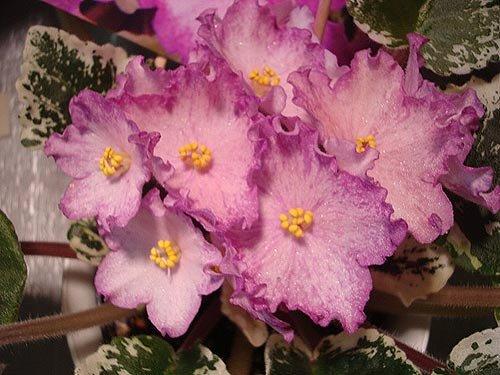
Despite the fact that violet is considered an unpretentious plant, it is often exposed to pests and diseases, such as:
- powdery mildew
- spotting
- gray rot
- late blight
- falling buds
- With powdery mildew, the entire plant becomes covered with a grayish coating followed by the appearance of black spots. This disease leads to the elimination of flowering. Occurs as a result of excess moisture and low temperature. Powdery mildew is treated with fungicidal agents.
- At affected by spotting violet leaves and stems become stained. The cause of this disease is overwatering and getting water on the leaves of violets. In addition, the appearance of yellowness on the leaves can be caused by the wrong choice of place for violets exposed to direct sunlight.
- When diseased with gray rot, the plant becomes covered with a gray cobweb, under which putrefactive processes develop. Gray rot is provoked by low illumination of planting sites and excess moisture in the soil. This is a fungal disease. The situation can be corrected by removing diseased parts of the plant and treating with antifungal drugs.
- Phytophthora is a fungal disease that causes rotting of the root system of Saintpaulias. At the same time, the leaves begin to dry out. If the leaves begin to dry out during heavy watering, this is a sure sign of late blight. Often occurs when the soil is waterlogged and the air humidity is high. Unfortunately, this disease is an indication for plant destruction. The pots must be sterilized afterwards.
- The falling of buds is associated with changes in temperature and humidity in the room. The disease can also be triggered by high levels of fertilizers.
According to reviews from amateur flower growers, the violet variety “EK-goddess of beauty” is quite easy. This variety does not require frequent watering and blooms beautifully and for a long time. The variety of shades of this variety and lush flowering are noted. Caring for indoor Saintpaulias can cause a lot of trouble for plant growers. But at the same time, the charm of violet flowers blooming almost all year round will greatly delight the inhabitants of the house.
Interesting video about Uzumbara violet:
Interesting information about the vegetable garden

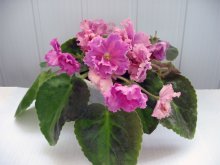



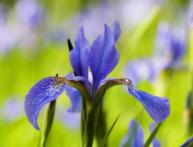


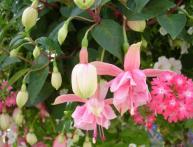

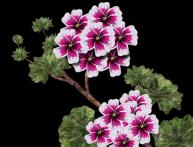
Comments
I took a violet leaf from my godfather, but I can’t germinate it. Sits in water and does not take root. Anyone with experience, can you tell me what's wrong?
In winter, leaves generally take root very reluctantly, even to the point of rotting. Much also depends on the variety - some varieties produce roots abundantly, regardless of the time of year, while others will not give you any in spring or summer. In such cases, I advise you to use the drug Kornevin.